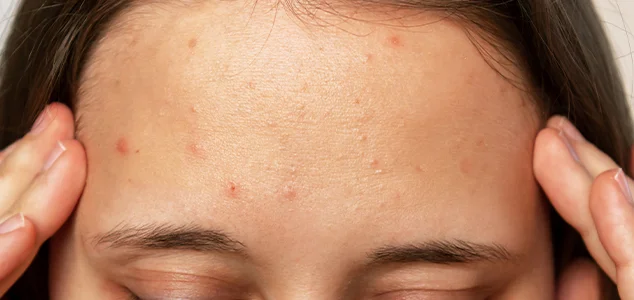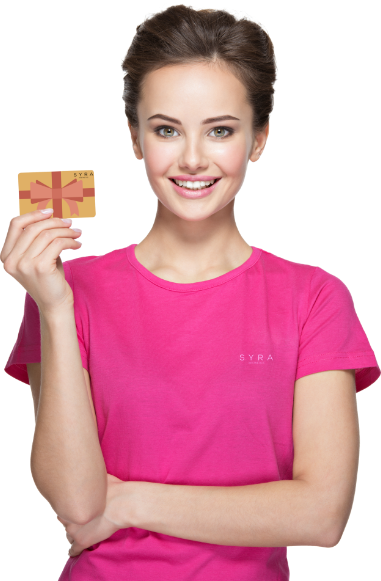Table of Contents
Summer season’s high heat and humidity can cause sweat acne, which is characterized by red or pink bumps that result from sweat clogging the pores or skin irritation from friction.
Unlike hormonal acne, sweat acne can affect individuals of any age. Preventive measures and skincare routines may help, while persistent cases may require consultation with an expert provider like Dr. Syra Hanif, who offers cosmetic treatments for acne along with other aesthetic services in NYC.
Research indicates over 50 million Americans suffer from acne annually, due to various factors – However, the question is “Does sweat actually cause acne?”
Does Sweat Cause Acne?
Sweating can help keep skin clear, but letting it accumulate on the skin can lead to acne. Sweat contains salts and urea – if not washed off, it can trap bacteria, oil, and dirt, clogging the pores. This is especially true when combined with friction from sports gear or tight clothes. Sweat acne can affect both, those prone to regular acne and even those who usually don’t have breakouts.
What is Sweat Acne?
Sweat acne occurs when sweat is allowed to stay on the skin for long, trapping bacteria and debris in pores and leading to acne breakouts. It can also result from friction or pressure from athletic equipment, backpack straps, or tight clothing, known as acne mechanica. This differs from traditional acne, which is hormone-related, as it’s specifically caused by mechanical means like rubbing and pressure.
What Does Sweat Acne Look Like?
Sweat pimples, appearing as red or pink bumps from accumulated sweat, differ from the traditional acne’s blackheads. Acne mechanica, caused by friction from athletic gear, results in papules, pustules, or nodules. Papules and pustules, forms of inflammatory acne, are red bumps with pustules having a pus-filled white top. Nodules, indicating more severe infection, are painful and deeper under the skin.
Sweat Acne vs. Heat Rash Bumps
Sweat and heat rash can both cause acne-like bumps on hot, humid days. Sweat acne results from trapped bacteria and debris clogging pores, while heat rash occurs when sweat ducts are clogged, trapping sweat under the skin, leading to red bumps. Heat rash typically appears on the chest, back, or neck and requires different treatment from sweat acne.
What Adds Up in Sweat Acne?
Biological Factors:
- Acne Vulgaris: Individuals with acne-prone skin are more susceptible to sweat acne.
- Excessive Sweating: Higher sweat production increases the risk of developing sweat pimples.
- Gender Differences: Men may be more prone to sweat acne due to generally higher sweat production than women.
Behavioral Factors:
- Post-Workout Clothing: Wearing tight, non-moisture-wicking clothes during/after exercise can trap sweat and cause friction.
- Remaining in Sweaty Clothes: Staying in sweaty attire for too long can increase acne risk.
- Products on Skin: Makeup and sunscreen can mix with sweat, trapping dirt and clogging pores.
How to Prevent Sweat Acne?
- Wear Loose Clothing: Choose loose, moisture-wicking clothes to prevent sweat from trapping against your skin and clogging pores.
- Use Oil-Free Sunscreen: Opt for oil-free, non-comedogenic sunscreen with at least SPF 30 to protect skin and reduce acne risk.
- Dab Sweat with a Clean Towel: Gently dab your skin during workouts with a clean towel to avoid irritation and prevent bacteria transfer.
- Change Clothes After Sweating: Swap sweaty clothes for clean ones immediately after a workout to avoid trapping sweat, dirt, and bacteria on your skin.
- Avoid Sharing Equipment: Shared sports equipment can harbor acne-causing bacteria; clean before use.
- Shower After Workouts: Shower with a gentle, non-comedogenic cleanser post-exercise to remove sweat and bacteria.
- Stay Hydrated: Drink water to prevent dry skin and excess sebum production, especially in hot weather or after exercising.
Botox for Sweat Acne
Botox, primarily known for smoothing facial wrinkles, also serves as an innovative treatment for sweat-induced acne on the face. By temporarily blocking the nerve signals that stimulate the sweat glands, Botox effectively reduces excessive facial sweating.
This reduction in sweat decreases the likelihood of sweat mixing with bacteria and oils on the skin, which can clog pores and lead to acne outbreaks. The result is a drier skin surface, less hospitable to acne-causing bacteria, and a decrease in the potential for pore blockage.
Given its targeted application, Botox can be an effective adjunct treatment for managing facial-acne related to excessive sweating, but it’s crucial to consult with a dermatologist to determine the suitability and ensure a safe and effective treatment plan.
Conclusion
Understanding the relationship between sweat and acne is crucial for anyone looking to maintain clear, healthy skin. While sweat itself does not cause acne, the environment it creates can contribute to the development of acne if not properly managed.
By following the recommended skin care practices and seeking professional advice when necessary, it’s possible to minimize the impact of sweat on acne and enjoy a clearer complexion.
Book your appointment with Dr. Syra Hanif today to get the best treatment for Sweat Acne.

-
About The Author
Dr. Syra Hanif M.D.Board Certified Primary Care Physician
Dr. Hanif is the Director of Aesthetic Medicine. She is a board-certified physician in Aesthetic Medicine who specializes in using non-surgical alternatives in order to enhance one's appearance through Botox and fillers.
Read More


